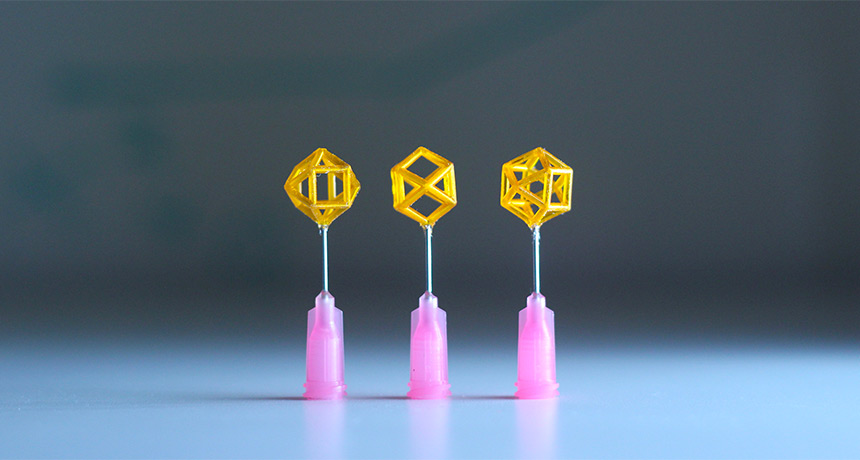Magnets make a new soft metamaterial stiffen up in a flash

Magnetism transforms a weird new material from soft to rigid in a split second.
This metamaterial — a synthetic structure designed to behave in ways that natural materials don’t — comprises a gridlike network of plastic tubes filled with fluid that becomes more viscous in a magnetic field, causing the tubes to firm up. The material could help make more adaptable robots or body armor, researchers report online December 7 in Science Advances.
Christopher Spadaccini, a materials engineer at Lawrence Livermore National Laboratory in California, and colleagues 3-D printed lattices composed of plastic struts 5 millimeters long and injected them with a mixture of tiny iron particles and oil. In the absence of a magnetic field, the iron microparticles remain scattered randomly throughout the oil, so the liquid is runny. But close to a magnet, these iron microparticles align into chains along the magnetic field lines, making the fluid viscous and the lattices stiffer.
A solid hunk of iron microparticle–filled material would be heavy and expensive to make. Building tubular structures that are mostly open space makes this tunable material more lightweight, says coauthor Julie Jackson, an engineer at Lawrence Livermore.
The researchers tested individual “unit cells” of the new material — hollow, die-shaped structures that can collectively form the larger lattices. Moving one unit cell from about eight centimeters to one centimeter away from a magnet increased its stiffness by about 62 percent.
In future technologies, this material could be paired with devices that use electricity to generate magnetic fields, called electromagnets. Material that becomes softer or stiffer on demand could be used to make next-generation sports pads or helmets with tunable impact absorption, Jackson says. Robots with changeable stiffness could squeeze into small spaces, but then be sturdy enough to carry or move other objects.